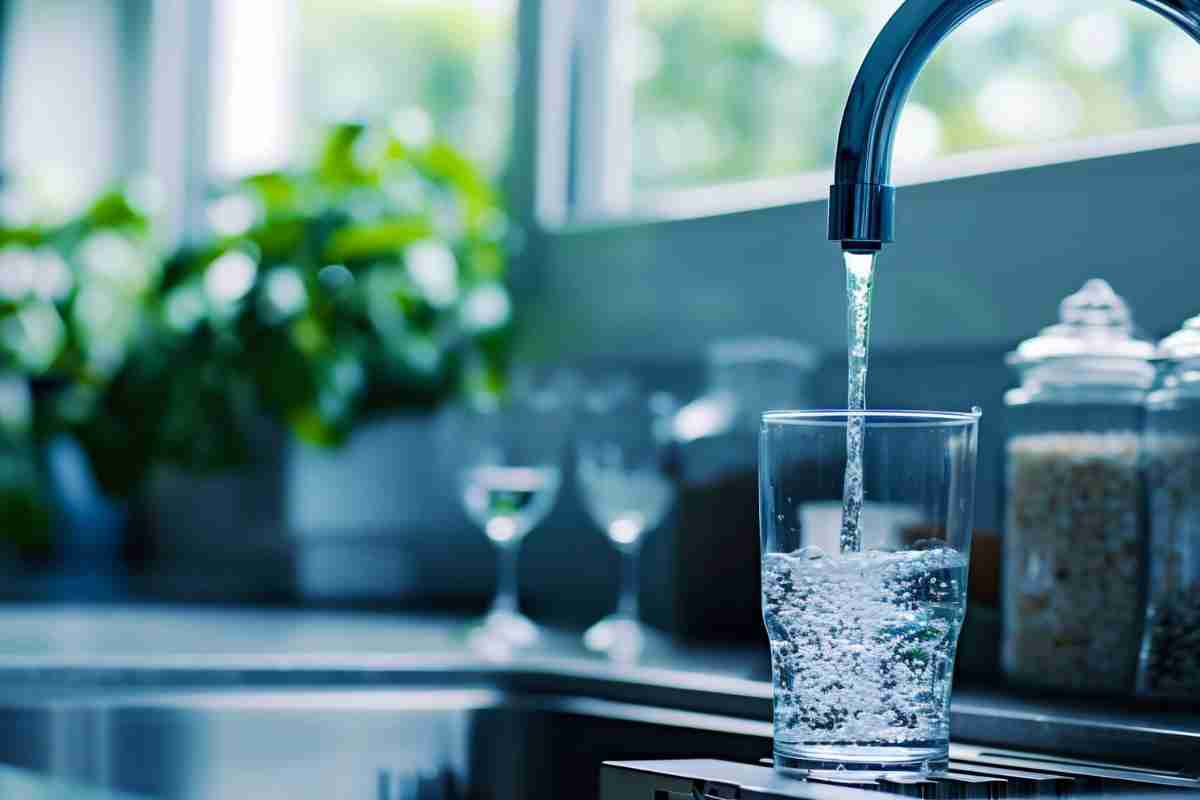Ensuring Home Health Through Better Water Quality
Protect your family's health with clean water. Discover practical tips to improve water quality at home. Safe drinking water starts here.

Clean water is essential for a healthy home. It's not just about quenching thirst; water impacts everything from cooking and cleaning to personal hygiene. But how can we make sure the water flowing through our taps is safe?
This article explores practical ways to improve water quality at home, helping to protect your family's health and well-being.
Why Water Quality Matters
Water quality affects more than you might think. From the taste of your morning coffee to the shine of your freshly washed car, good water makes a difference. More importantly, it plays a crucial role in keeping you and your loved ones healthy.
The debate between filtered vs. tap water often comes up when discussing water quality, as many people wonder if the extra step of filtration is necessary for their home's water supply.
Health Impacts of Poor Water Quality
Poor water quality can lead to various health issues. These range from minor stomach upsets to more serious conditions like bacterial infections. In some cases, long-term exposure to certain contaminants may even contribute to chronic health problems.
For example, excessive lead in drinking water can cause developmental issues in children and high blood pressure in adults. Nitrates, often found in areas with heavy agricultural activity, can be particularly dangerous for infants.
Common Water Contaminants
Understanding what might be in your water is the first step to improving its quality. Here are some common contaminants:
- Microorganisms: Bacteria, viruses, and parasites can cause immediate health effects.
- Chemicals: This includes both natural substances like arsenic and human-made pollutants such as pesticides.
- Minerals: While some minerals are beneficial, others, like lead or mercury, can be harmful.
- Sediment: Tiny particles of soil, sand, or other materials can make water look cloudy and affect its taste.
Each of these contaminants can enter water supplies through different routes. For instance, old pipes might leach lead into otherwise clean water, while agricultural runoff can introduce pesticides into groundwater sources.
Testing Your Water
How do you know if your water needs improvement? The answer lies in testing. Regular water testing can reveal hidden problems and help you take appropriate action.
Home Testing Kits
These provide a quick and easy way to check for basic contaminants. While not as comprehensive as professional tests, they can give you a general idea of your water quality.
Home testing kits typically check for common issues like pH levels, chlorine, and some bacteria. They're a good starting point, especially if you're new to water quality testing.

Professional Water Testing
For a more thorough analysis, consider hiring a professional water testing service. These experts use advanced equipment to detect a wider range of contaminants, often at lower concentrations than home kits can manage.
Professional tests can identify specific bacteria, viruses, and chemical contaminants. They're particularly important if you rely on well water or live in an area with known water quality issues.
Interpreting Test Results
Once you have your test results, what do they mean? Water quality reports often contain unfamiliar terms and measurements. Here's a quick guide:
- pH: This measures how acidic or basic your water is. Ideal drinking water should have a pH between 6.5 and 8.5.
- Total Dissolved Solids (TDS): This indicates the amount of dissolved minerals in your water. While some minerals are beneficial, high TDS levels can affect taste and appliance performance.
- Coliform Bacteria: These are indicator organisms. Their presence suggests that harmful bacteria might also be in your water.
If your test results show concerning levels of any contaminants, don't panic. There are many effective solutions available.
Improving Water Quality at Home
Once you know what's in your water, you can take steps to improve it. Here are some effective methods:
Filtration Systems
Water filters come in many forms, from simple pitchers to whole-house systems. They work by physically removing contaminants as water passes through them.
Types of filters:
- Activated Carbon Filters: These are effective at removing chlorine, sediment, and some organic compounds. They're commonly found in pitcher filters and faucet-mounted systems.
- Reverse Osmosis Systems: These use a semi-permeable membrane to remove a wide range of contaminants, including dissolved solids, heavy metals, and some microorganisms.
- UV Filters: These use ultraviolet light to kill bacteria and other microorganisms. They're often used in combination with other filtration methods.
- Whole House Filters: As the name suggests, these filter all the water entering your home. They're particularly useful for addressing issues that affect more than just drinking water, like hard water or sediment.
Choosing the right filter depends on your specific water quality issues and household needs. Consider factors like installation requirements, maintenance needs, and long-term costs when making your decision.
Water Softeners
If your water is "hard" (high in minerals like calcium and magnesium), a water softener might be beneficial. Hard water can leave scale deposits on fixtures and appliances, reducing their efficiency and lifespan.
Water softeners work by exchanging calcium and magnesium ions with sodium or potassium ions. This process doesn't remove contaminants, but it can improve the taste and feel of your water, as well as protect your plumbing and appliances.
Boiling Water
For immediate protection against most biological contaminants, boiling water is an effective method. It kills most types of bacteria, viruses, and parasites. However, it doesn't remove chemical contaminants or improve taste.
To properly boil water for safety:
- Bring water to a rolling boil.
- Let it boil for at least one minute (three minutes at high altitudes).
- Let the water cool before using.
While boiling is a good short-term solution, it's not practical for all your water needs. It's best used in emergencies or when traveling to areas with questionable water quality.
Maintaining Your Water System
Improving water quality isn't a one-time task. Regular maintenance is crucial to ensure your water stays clean and safe.
Cleaning and Replacing Filters
All filters have a limited lifespan. Over time, they become less effective and may even harbor bacteria. Follow the manufacturer's instructions for cleaning and replacing your filters.
For example, pitcher filters typically need replacing every two to three months. Whole house filters might last six months to a year, depending on your water quality and usage.
Flushing Pipes
If you have concerns about your plumbing, periodic flushing can help. This involves running water through all your taps for several minutes to clear out any built-up sediment or contaminants.
This is particularly important if you've been away from home for an extended period or if there's been work on your local water supply.
Regular Testing
Even with a good filtration system in place, it's wise to test your water regularly. Annual testing is a good rule of thumb for most households. However, you might need more frequent tests if you use well water or live in an area with known water quality issues.
Staying Informed About Local Water Quality
Your home isn't an island when it comes to water quality. Staying informed about your local water supply can help you make better decisions about your home's water treatment needs.
Reading Water Quality Reports
If you're on a public water supply, your provider should send you an annual water quality report, also known as a Consumer Confidence Report. This document contains valuable information about your water source and any contaminants found during testing.
Key things to look for in these reports include:
- The source of your water (river, lake, aquifer, etc.)
- Any contaminants detected and their levels
- How these levels compare to EPA standards
- Information about potential health effects
- What the water company is doing to improve water quality
Don't be intimidated by the technical language in these reports. Most include a glossary to help you understand the terms used.
Community Resources
Local health departments and environmental agencies can be great sources of information about regional water quality issues. They might offer additional testing services or advice specific to your area.
For example, if your region has naturally occurring contaminants like arsenic or radon, these agencies can provide guidance on the most effective treatment methods.
Making Water Quality a Habit
Improving your home's water quality isn't just about installing a filter or running a test. It's about developing habits that prioritize clean, safe water.
Daily Practices for Better Water Quality
Simple daily habits can make a big difference:
- Run the tap for a few seconds before using water for drinking or cooking, especially first thing in the morning or after being away from home.
- Use cold water for cooking and drinking. Hot water can contain more dissolved metals from your plumbing.
- Clean and maintain water-using appliances regularly. This includes everything from your coffee maker to your washing machine.
- Be mindful of what goes down your drains. Avoid flushing medications or pouring harsh chemicals down the sink.
These small steps can significantly improve your water quality and protect both your health and your home's plumbing system over time.
Educating Family Members
Everyone in the household plays a role in maintaining water quality. Take time to explain the importance of clean water and the steps you're taking to ensure it. This can help build lasting habits and a shared commitment to health and safety.
Long-Term Planning
As you think about your home's future, consider how water quality fits into your plans. If you're renovating, for example, it might be a good time to upgrade your plumbing or install a whole-house filtration system.
Similarly, if you're landscaping, think about how your choices might impact local water quality. Using native plants and minimizing chemical fertilizers can help protect groundwater sources.
Conclusion
Clean, safe water is fundamental to a healthy home. By understanding your water quality, implementing appropriate water treatment methods, and developing good habits, you can ensure your family has access to the best possible water. Remember, improving water quality is an ongoing process. Stay informed, test regularly, and be prepared to adjust your approach as needed. Your efforts will contribute not just to your family's health but to the overall well-being of your community.




Comments ()